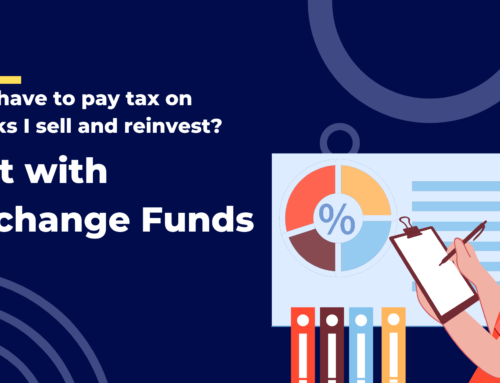Earlier this month, the Social Security Administration released its annual Trustees Reports on the financial condition of the program. This year’s report contained some hugely important news that came as a shock to absolutely nobody who pays any attention to this stuff: Social Security is running out of money.
Specifically, the SSA expects to pay out more in benefits in 2018 than it will collect in FICA taxes, the first time Social Security has run at a deficit since 1982. But whereas that year’s deficit was a temporary blip, the Social Security board of trustees expects to run at a loss from here on in, barring some major changes in the law. This represents a sea change in the nature of the program. Social Security is the largest line item on the US federal budget, and as anybody who’s looked at their own pay-stub knows, is funded with its own special, separate tax known as FICA. For most of its history, the SSA has operated in the black, collecting more in FICA taxes than it’s paid out in benefits. The difference has been pocketed into the Social Security trust fund (actually several separate trust funds split between Social Security and Medicare) and so the good news is that all told the SSA has a little over $3 trillion in the trust fund it can rely upon to finance its shortfall.
The bad news is that based on the SSA’s own projections, the Social Security trust fund will be completely depleted by about 2034. The main Medicare trust fund is actually expected to fall to zero even earlier than that, just eight short years away in 2026, soon enough to concern even most of today’s current retirees. Under current law, once the trust funds are depleted, the SSA will only be able to pay out in benefits whatever it takes in in revenues. Based on the latest report, that means come 2026 Medicare will have to reduce benefits by about 10%. Once the Social Security funds are gone, recipients will have to take a haircut of about 25%. Assuming it comes to this, this would put millions of elderly Americans in financial hardship; about a third of American retirees depend exclusively on Social Security to meet their financial needs.
Actually, the bad news is worse than that. Because everything I just said about the trust funds is a lie; they don’t actually exist.
In the past, when Social Security has run at a surplus, Congress has just gone ahead and spent that money on its general budget. Every year it does, it writes what is essentially an IOU to the SSA for the amount. These IOUs are known as “special obligation bonds.” They are non-marketable treasury bonds that “pay” a market rate of interest. The SSA counts these bonds as assets on their balance sheet in the trust fund and interest earned on them as revenue, but it’s all just an accounting fiction. The SSA could not sell these assets if they wanted to because they don’t actually exist; no money ever changes hands and the “interest” the SSA earns on them is received merely as additional IOUs credited to their account. The entire system is merely a way for one branch of the government to keep track of how much it owes another branch. As the Office of Management and Budget noted in 1999:
These [trust fund] balances are available to finance future benefit payments and other trust fund expenditures–but only in a bookkeeping sense. These funds are not set up to be pension funds, like the funds of private pension plans. They do not consist of real economic assets that can be drawn down in the future to fund benefits. Instead, they are claims on the Treasury, that, when redeemed, will have to be financed by raising taxes, borrowing from the public, or reducing benefits or other expenditures.
And so, the warnings that we’ve been hearing for years that we need to fix Social Security before the trust fund runs out in the 2030s are a bit misleading. It’s not that we’ll be forced to raise taxes or cut benefits before the trust fund is depleted; the trust fund is a fiction and so we are forced to raise taxes or cut benefits now (or issue more debt, which raises future taxes). The only difference the trust fund makes is in shifting around who has to make the decisions for a few years. As it stands now, Social Security and Medicare are considered “mandatory spending” and are more-or-less insulated from the politics of the usual budgeting process. So when the SSA needs to call on their trust fund “assets” the Treasury cuts them a check automatically without Congress ever needing to get involved. For most of its history, of course, this has never been a problem because Social Security has usually paid for itself with money left over, but no longer. As the SSA draws down on the trust fund over the coming years, this will translate into an automatically increasing federal deficit that Congress will likely perceive as eating into their powers of appropriation. With the federal deficit now over $1 trillion dollars after the new tax cuts, deficit hawks don’t appear to be a very powerful force in government right now, but with the SSA set to start adding hundreds of billions of dollars more to that total each year, it’s unlikely that lawmakers or the public will perceive the situation as sustainable for much longer. Even if Congress does kick the can down the road and allows the deficit to balloon, come 2034 at the latest their hands will be forced; once the trust fund is depleted the Treasury will no longer be authorized to automatically subsidize Social Security and Congress will be forced to act or else watch millions of elderly voters be thrown into poverty.
Since its beginning, Social Security has been a widely popular American institution, more so than virtually any other part of the government. In large part this is probably because of its political insulation. No matter who’s in office, everyone knows grandma can count on getting her Social Security check in the mail. And because the program is universal – everyone pays in and everyone who lives long enough collects – there’s been no clear distinction between “winners” and “losers” in Social Security, unlike with many other government policies. But this golden era has now come to an end. Policymakers will very soon be forced to make tough decisions that will ultimately benefit some constituencies and hurt others. Which direction the program goes may come down to who gets stuck holding the hot potato, but one way or another Social Security and Medicare will become politicized in the near future. This will affect not just how people plan for retirement, but the political landscape and social fabric of the country as well.
On this note I am more pessimistic than most. Various proposals on the right and the left imagine that Social Security can be fixed with relative ease, that there’s a free lunch on the table just waiting to be had. Raising taxes on just a small percent of the top earners could save the system for everyone else! Or, privatization could improve returns, making everybody better off! In my next post I will put the lie to these claims and stake out a bleak, fatalistic, and hugely unpopular stance: Social Security is a bad deal for the vast majority of Americans alive today, and there is no possible way to fix this because most of the real beneficiaries of Social Security are now all dead and left everyone now alive to pick up the tab.
Disclosures: This post is solely for informational purposes. Past performance is no guarantee of future returns. Investing involves risk and possible loss of principal capital. No advice may be rendered by RHS Financial, LLC unless a client service agreement is in place. Please contact us at your earliest convenience with any questions regarding the content of this post. For actual results that are compared to an index, all material facts relevant to the comparison are disclosed herein and reflect the deduction of advisory fees, brokerage and other commissions and any other expenses paid by RHS Financial, LLC’s clients. An index is a hypothetical portfolio of securities representing a particular market or a segment of it used as indicator of the change in the securities market. Indexes are unmanaged, do not incur fees and expenses and cannot be invested in directly.






